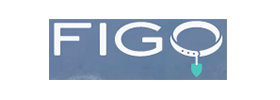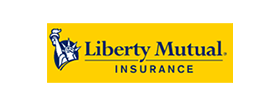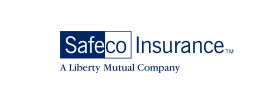The 2020 wildfire season in Colorado was the worst in state history. Not only is it heartbreaking to see our beautiful state burning each summer, but there are also more homes and businesses being impacted by fire than ever before.
Many people move to the foothills or the mountains for the breathtaking views and the relative seclusion from the noise and crowds in the city. Unfortunately, those luxuries often come with a much greater risk of wildfire damage.
According to an article from the Colorado State Forest Service, “The number of people living in areas at risk to the effects of wildland fire increased by nearly 50 percent from 2012 to 2017.” As of 2017 approximately 2.9 million people in Colorado, approximately half of the state’s population, live in areas at risk of being impacted by wildfires.
What does this have to do with insurance?
Simply put, the more structures that are impacted by wildfires, the more insurance companies are paying out.
While wind and hail claims are the most frequent, fire and lightning claims are the costliest. Since fires cause significant damage and result in much higher payouts than other claims, insurance companies have strict guidelines when it comes to insuring homes in high risk areas. As a result, it can be difficult to find insurance for homes in risky wildfire zones.
Most insurance companies use a FireLine score to determine the wildfire risk of any given home and will use that to decide if the home is eligible for coverage with that company. Some carriers are willing to take on greater risks, but they will often require certain mitigation efforts to reduce the risk to the home.
What factors do insurance companies look at when determining the wildfire risk of a home?
- Responding Fire Department-Insurance companies look at the proximity to the responding fire department, as well as if it is volunteer or paid and what kind of equipment they have available.
- Roads leading to your house– Are they paved or dirt roads? Are they wide enough for a fire truck to get through?
- Proximity to neighbors– Are there neighbors within eyesight of your house to report a fire if you are away?
- House materials– A log home is a much greater risk in a wildfire area than a brick home.
- Trees or bushes surrounding the home– Many insurance carriers will require that there are no trees within a certain distance of the home and no branches hanging over any structures on the property. This is considered a “defensible space.”
- Slope– Steeper slopes can increase speed that a wildfire spreads.
How can I find homeowners insurance if my home is in a high risk area?
Give us a call! This will save you a lot of time and effort because we can quote your property with many carriers rather than you having to call each one separately.
More importantly, we have strong relationships with the carriers work with. We have put in the time and effort to demonstrate to our insurance carriers that we operate with honesty and integrity.
While this may not seem important, it gives us the opportunity to advocate for our clients and often times we can get them to make an exception when they otherwise wouldn’t. Before you go to a non-standard carrier or waste hours of your life calling insurance companies or getting quotes online, give us a chance to work for you.
Tips for preventing a wildfire from destroying your home (from Rocky Mountain Insurance Information Association):
- Create a 30-foot defensible space around your home by removing as much flammable material as you can. Replace flammable vegetation with fire resistive plants.
- Reduce the number of trees in heavily wooded areas by spacing native trees and shrubs at least 10 feet apart. On trees taller than 18 feet, prune lower branches within six feet of the ground.
- Remove branches overhanging the roof or coming within 10 feet of the chimney. Clean all dead leaves and needles from the roof, gutters, and yard.
- Install a roof that meets a fire classification of “Class B” or better. Cover the chimney outlet and stovepipe with nonflammable screening no larger than half-inch mesh.
- Install dual- or triple-paned windows, and limit the size and number of windows that face large areas of vegetation.
- Put woodpiles and liquid propane gas tanks at least 30 feet from all structures and clear away flammable vegetation within 10 feet of those woodpiles and propane tanks.
- My boat is already paid for and rarely used. Should I still invest in boat insurance?
- Wondering If Homeowners Insurance Is A Smart Investment? What to Know
- Commercial Insurance: Security Upgrades For An Office Setting
- The Difference Between Classic, Historic, Vintage, and Restored Automobiles
- Recreational Drone Insurance: Flying with Peace of Mind
Sources:
Half of Coloradans Now Live in Areas at Risk to Wildfires. (2018, November 26). Retrieved September 24, 2020, from https://csfs.colostate.edu/2018/11/26/half-of-coloradans-now-live-in-areas-at-risk-to-wildfires/
Wildfire. (n.d.). Retrieved October 07, 2020, from http://www.rmiia.org/catastrophes_and_statistics/Wildfire.asp
- My boat is already paid for and rarely used. Should I still invest in boat insurance?
- Wondering If Homeowners Insurance Is A Smart Investment? What to Know
- Commercial Insurance: Security Upgrades For An Office Setting
- The Difference Between Classic, Historic, Vintage, and Restored Automobiles
- Recreational Drone Insurance: Flying with Peace of Mind






















